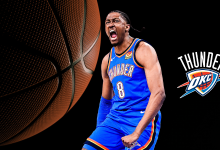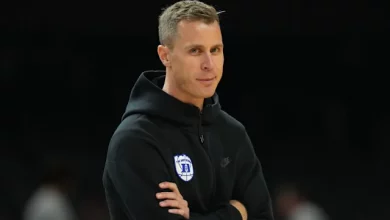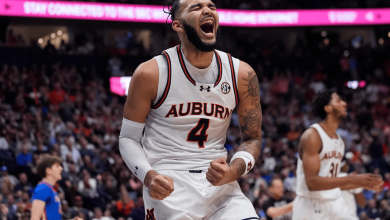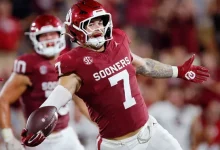In Jeremy Fowler’s ESPN executive poll, Arizona Cardinals quarterback Kyler Murray was ranked outside the top 10 quarterbacks in the NFL.
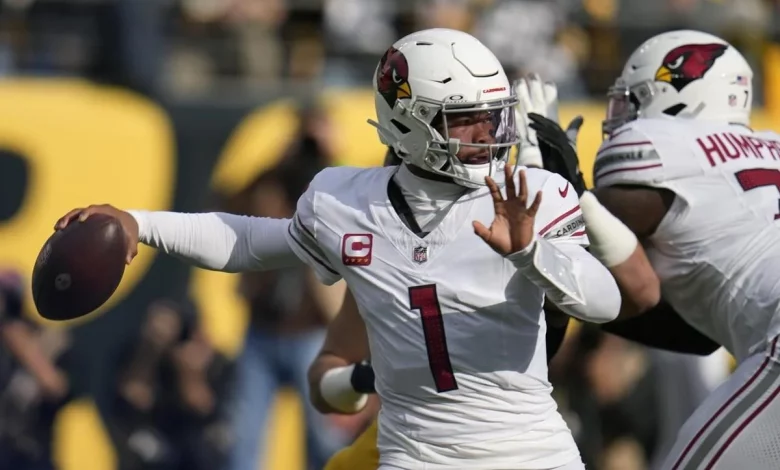
Kyler Murray, the dynamic quarterback of the Arizona Cardinals, has been one of the most intriguing and talked-about players in the NFL since his emergence as a franchise cornerstone. Known for his exceptional athleticism, quick decision-making, and playmaking ability, Murray has often been considered among the league’s promising young quarterbacks. However, recent evaluations, such as Jeremy Fowler’s ESPN executive poll, have placed him outside the NFL’s top 10 quarterbacks, a ranking that has sparked debate among fans, analysts, and industry insiders alike. This divergence between perception and ranking raises important questions about Murray’s development, consistency, and the expectations placed upon him as a premier NFL quarterback.
To fully understand the significance of Murray’s placement outside the top 10 in Fowler’s poll, it is essential to contextualize his career trajectory, strengths, areas for improvement, and how these factors influence perceptions among NFL executives. Additionally, examining the criteria used by executives in their evaluations, the competitive landscape of NFL quarterbacks, and Murray’s potential for growth provides a comprehensive picture of his current standing and future prospects.
Kyler Murray’s Rise and Early Career Highlights
Kyler Murray was drafted first overall by the Arizona Cardinals in the 2019 NFL Draft, a move that immediately thrust him into the spotlight as the franchise’s new face. Coming out of Oklahoma, where he showcased his dual-threat capabilities—winning the Heisman Trophy and setting college records—Murray entered the NFL with high expectations. His initial seasons were marked by flashes of brilliance, including electrifying runs, precise throws, and a natural ability to extend plays under pressure.
In his rookie year, Murray demonstrated he could be a game-changer despite some inconsistencies, finishing with over 3,700 passing yards, 20 touchdowns, and 12 interceptions. The following season, he continued to develop, leading the Cardinals to their first playoff appearance since 2015 and earning Pro Bowl honors. His statistical production improved, and he gained recognition as one of the league’s more exciting young quarterbacks.
Perception Versus Ranking: The Significance of the ESPN Executive Poll
Jeremy Fowler’s ESPN executive poll gathers opinions from NFL team executives, scouts, and league insiders to assess the top quarterbacks in the league. Such polls are influential because they reflect the opinions of those with inside knowledge and direct experience evaluating talent across the league. When Murray was ranked outside the top 10, it signaled a shift in perception among these insiders, raising questions about his consistency, leadership, and overall impact relative to his peers.
The NFL is a highly competitive league where quarterback rankings are often fluid, influenced by recent performance, team success, individual skills, and intangible qualities like leadership and football IQ. While Murray’s athleticism and potential are universally acknowledged, these polls suggest that some executives may have concerns about his ability to consistently perform at an elite level, especially under pressure or in high-stakes situations. This perceived gap between Murray’s potential and his current standing within the league’s elite quarterbacks is a critical point of analysis.
Strengths and Talents That Define Kyler Murray
Murray’s strengths as a quarterback are undeniable. His exceptional athleticism—combining quickness, agility, and a strong arm—makes him a dual-threat that defenses struggle to contain. His ability to extend plays outside the pocket creates opportunities for big gains and keeps defenses off-balance. Additionally, his improvisational skills and vision allow him to make plays that many other quarterbacks cannot.
His quick release and ability to throw accurately on the run also make him a dangerous weapon in the passing game. These qualities, when fully harnessed, can elevate an offense and provide a team with a significant competitive advantage. In the right system, with the right support, Murray has the tools to be a top-tier quarterback in the NFL.
Areas for Improvement and Challenges
Despite these strengths, Murray’s ranking outside the top 10 reflects concerns about certain areas that have hindered his progression. One major issue has been consistency. While he can be spectacular in some games, there are others where his decision-making and accuracy falter, leading to turnovers or stalled drives. This inconsistency can be frustrating for coaches and executives who desire a quarterback capable of maintaining high performance week after week.
Another challenge is durability. Murray’s playing style—marked by his scrambling and improvisation—exposes him to unnecessary hits, and he has suffered injuries that have sidelined him in critical moments. Durability and injury management are crucial for sustaining elite performance, and concerns about his long-term health can influence how executives perceive his ranking.
Furthermore, leadership and intangibles are sometimes scrutinized. While Murray has shown flashes of leadership, questions remain about his ability to rally teammates and command respect consistently, especially in high-pressure playoff scenarios. Developing consistency, resilience, and leadership qualities are often traits associated with the league’s top quarterbacks, and perceived gaps in these areas can impact rankings.
The Competitive Landscape of NFL Quarterbacks
The NFL’s quarterback hierarchy is highly competitive and often debated. At the top are players like Patrick Mahomes, Josh Allen, Joe Burrow, and Justin Herbert—players who have demonstrated sustained excellence, clutch performance, and leadership. These quarterbacks have set a benchmark for success in the league, with impressive statistical achievements and playoff success.
Murray’s exclusion from the top 10 suggests that, despite his talent, he may not yet have reached that level of consistency and dominance. The league’s executives may view his game as still evolving and see potential for growth rather than established greatness. This perception can be influenced by recent performance, team success, and how well a quarterback performs under pressure and in critical moments.
Potential for Growth and Future Outlook
While Murray’s current ranking outside the top 10 indicates room for improvement, it also underscores his potential for development. As a young quarterback with a high ceiling, he has the opportunity to refine his decision-making, improve his accuracy, and demonstrate durability. The right coaching, offensive system, and team support can help him elevate his game.
In particular, focus areas for Murray include developing a more consistent passing game, reading defenses better, and maintaining physical health. If he can address these issues, he has the talent to climb back into the top tier of NFL quarterbacks. His athletic profile and playmaking ability give him a foundation that, with proper growth, can position him as an elite quarterback and a perennial Pro Bowler or All-Pro selection.
Implications for the Arizona Cardinals and Murray’s Legacy
For the Arizona Cardinals, Murray’s ranking outside the top 10 is a reminder of the high standards expected at the quarterback position. The franchise’s success often hinges on Murray’s development and ability to elevate the team. The coaching staff and management must work to support his growth, build a stronger roster around him, and foster a winning culture that can showcase his talents.
For Murray’s legacy, this ranking serves as both a challenge and motivation. It highlights the importance of consistency, resilience, and continuous improvement. If he can use this feedback as motivation to elevate his game, he can cement himself among the league’s best and dispel doubts about his ceiling.
A Snapshot of Perception and Potential
In conclusion, Kyler Murray’s placement outside the NFL’s top 10 quarterbacks in Jeremy Fowler’s ESPN executive poll reflects a nuanced and complex evaluation of his current status and future trajectory. While his athleticism and talent are unquestioned, factors such as consistency, durability, leadership, and playoff success influence how insiders perceive him relative to his peers. This ranking is not necessarily a condemnation but rather an acknowledgment of the journey ahead and the potential for Murray to ascend into the league’s elite with continued development.
The NFL landscape is dynamic, with quarterbacks evolving rapidly, and Murray’s youthful potential suggests he remains a player to watch. His career thus far has been marked by flashes of brilliance, and with targeted growth, he can redefine his standing and fulfill the promise that made him a top draft pick. For fans and analysts alike, this ranking is a reminder that in the NFL, even the most talented players are a work in progress, and the path to greatness is paved with perseverance, resilience, and continuous improvement.

